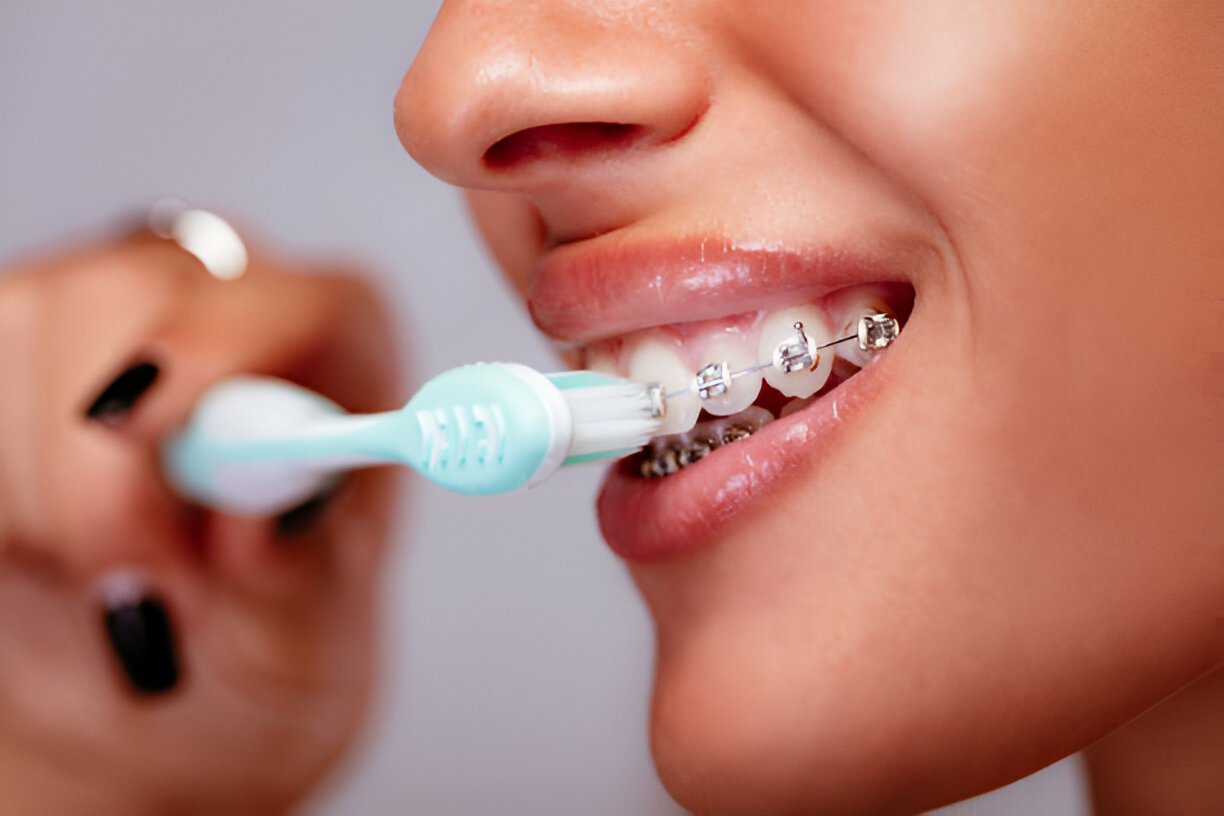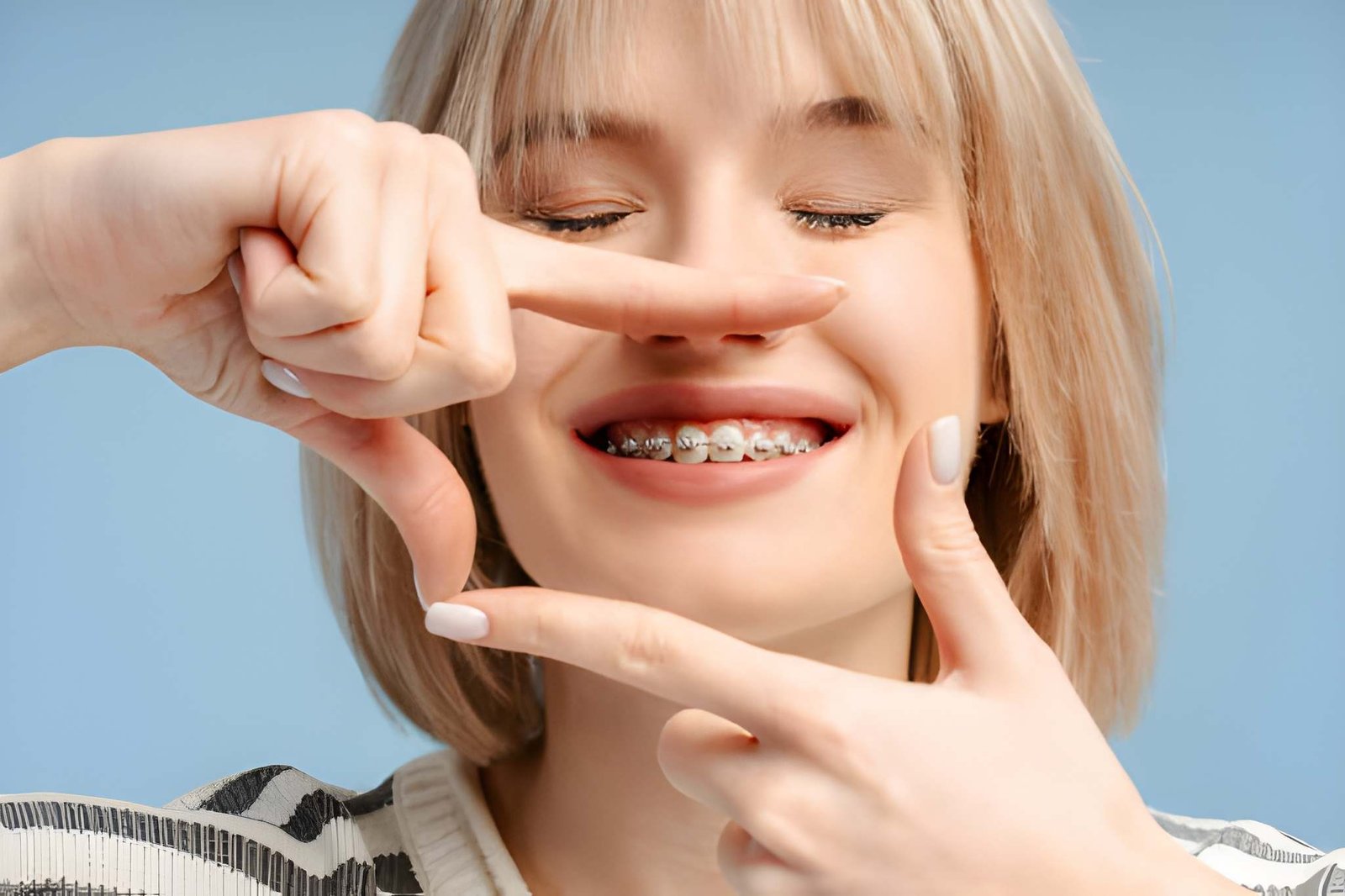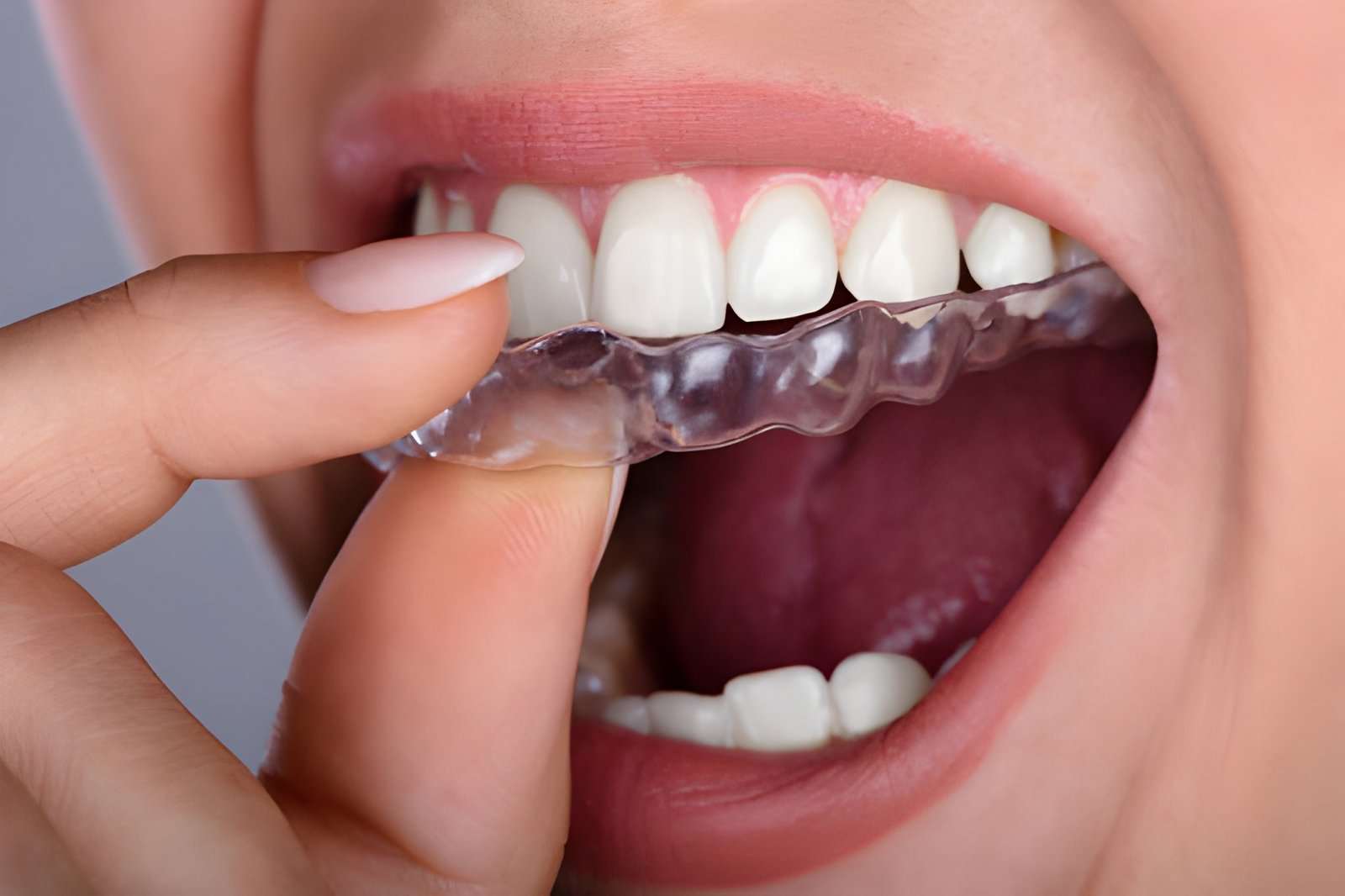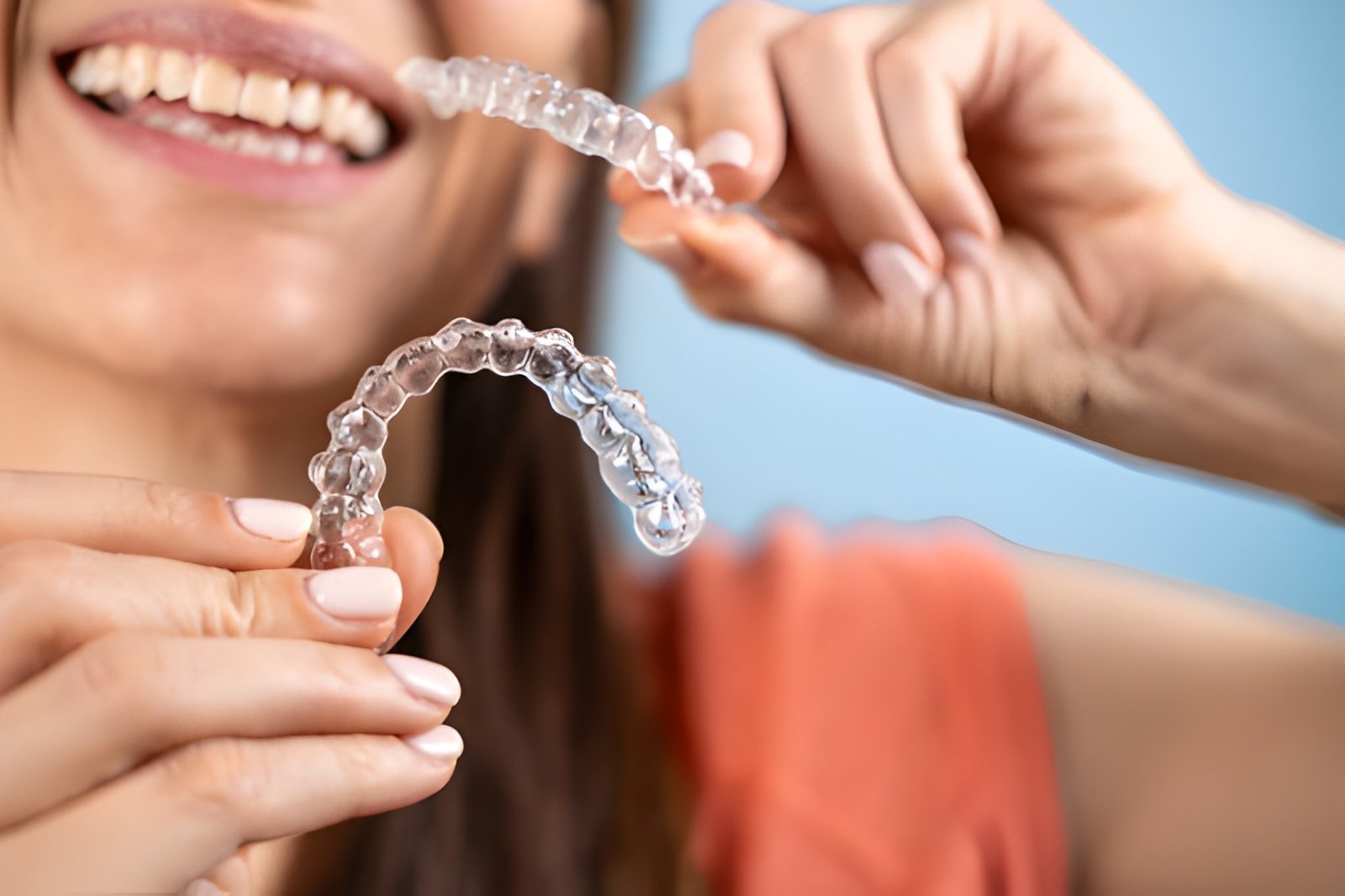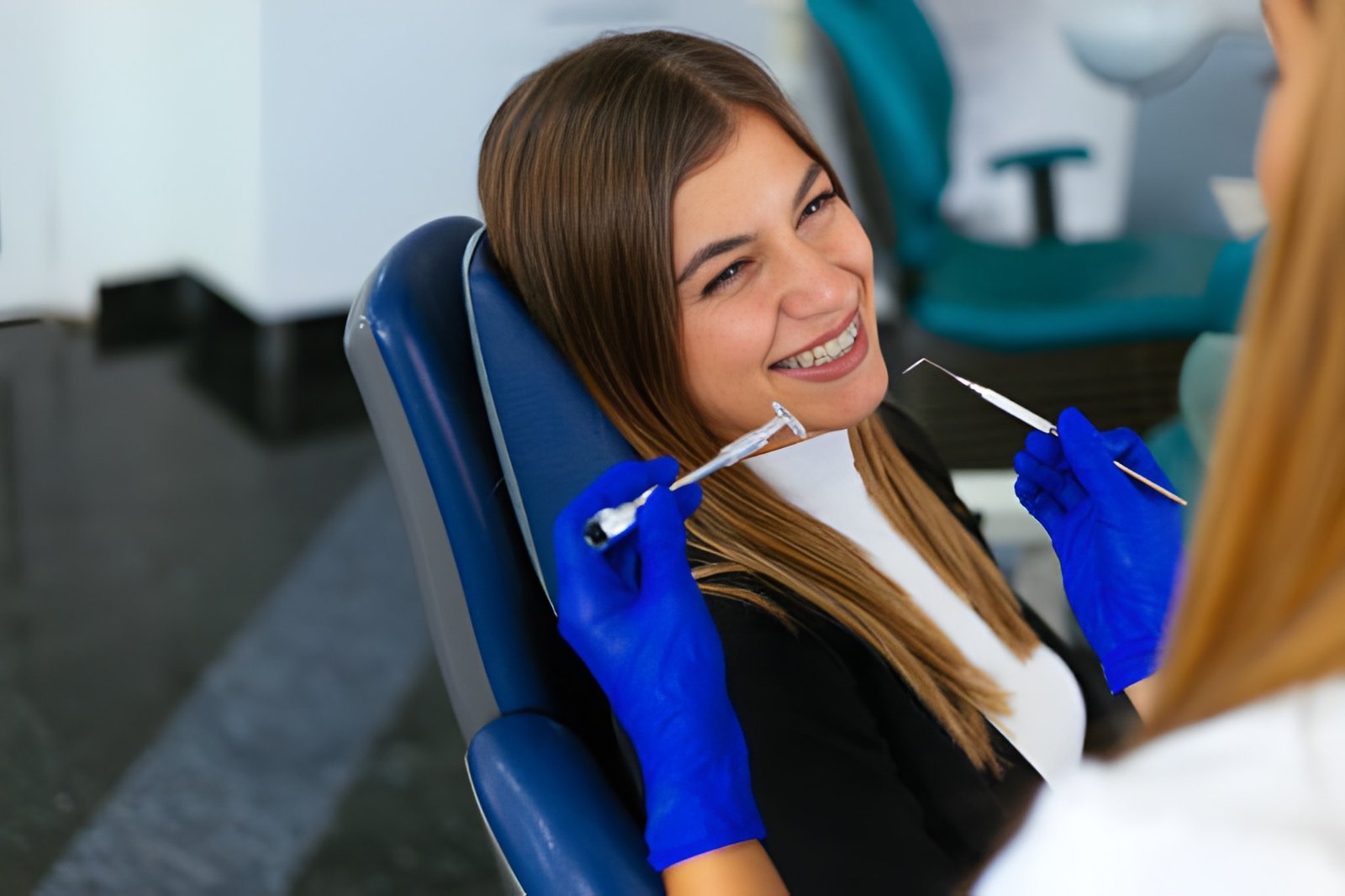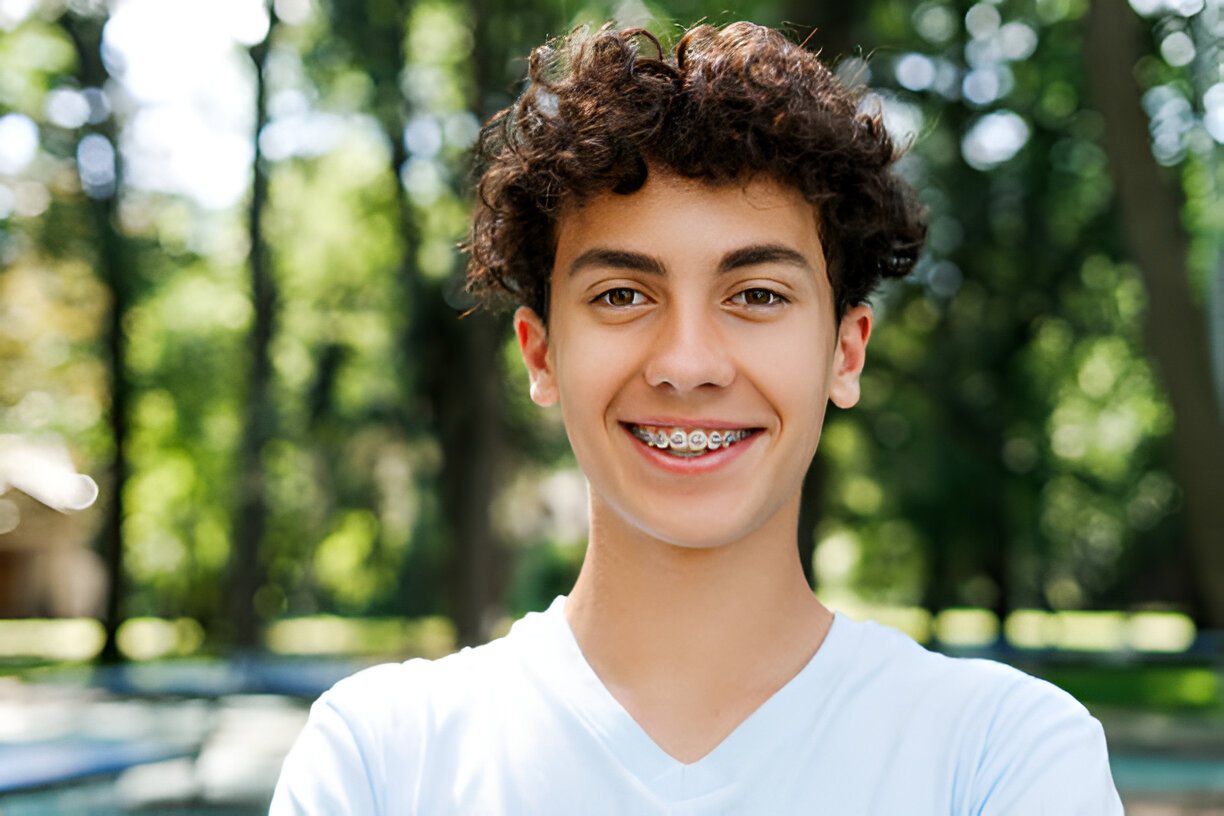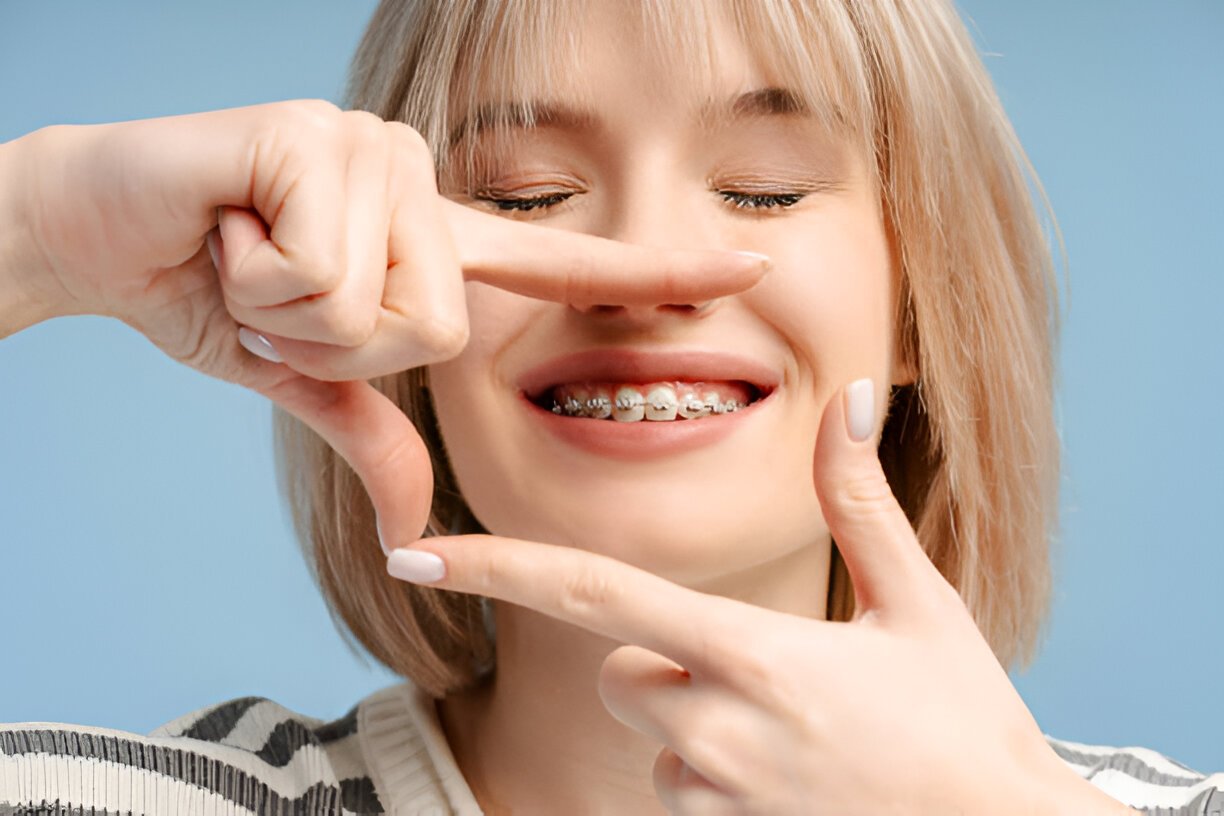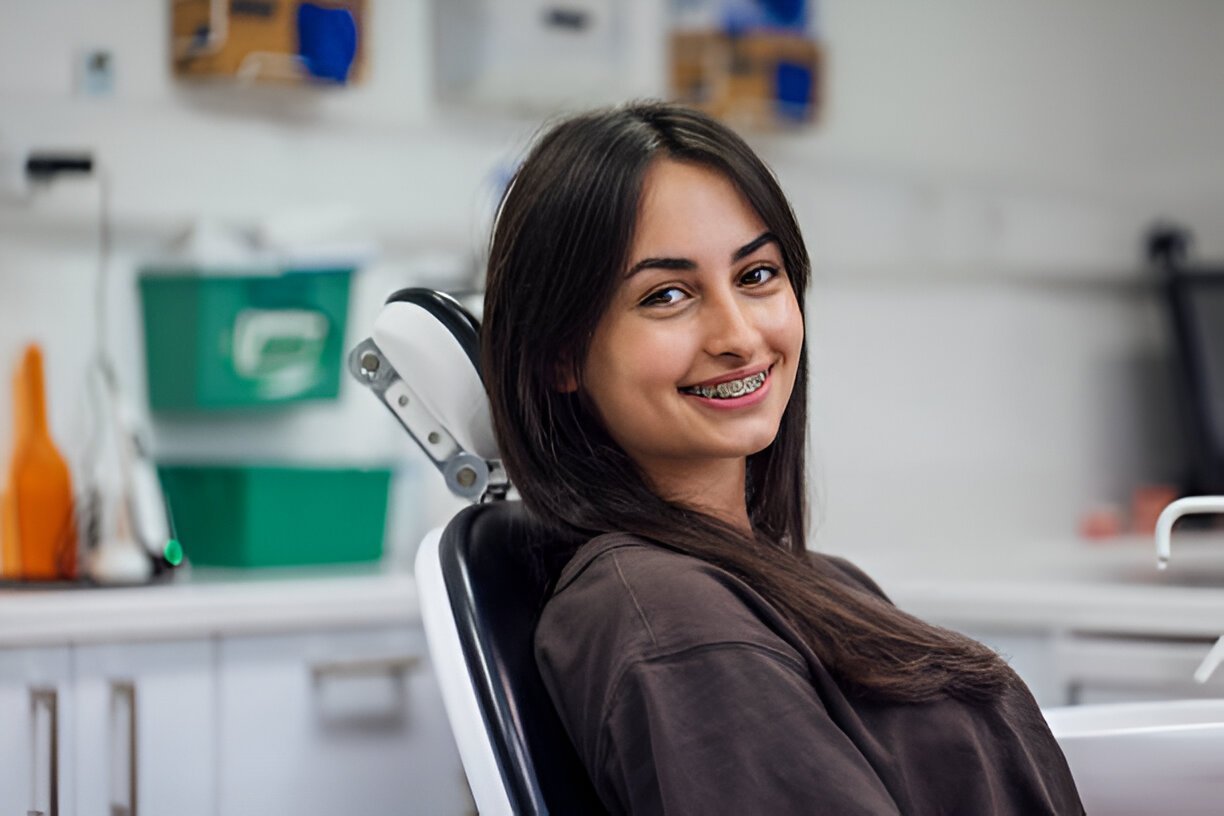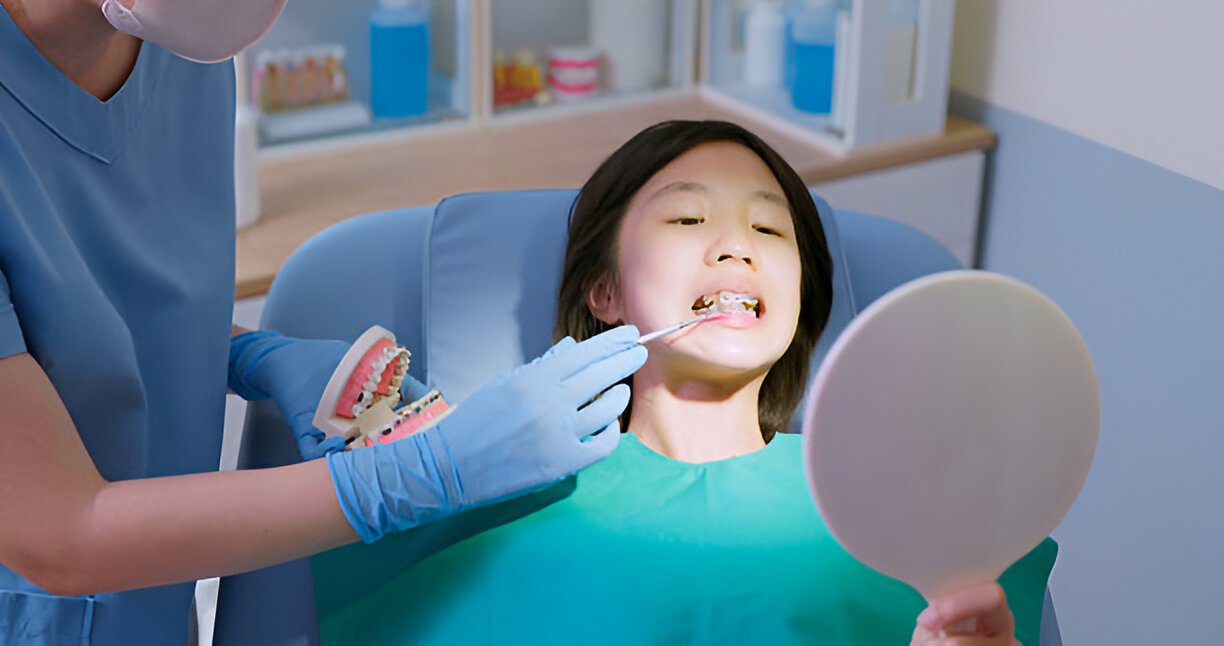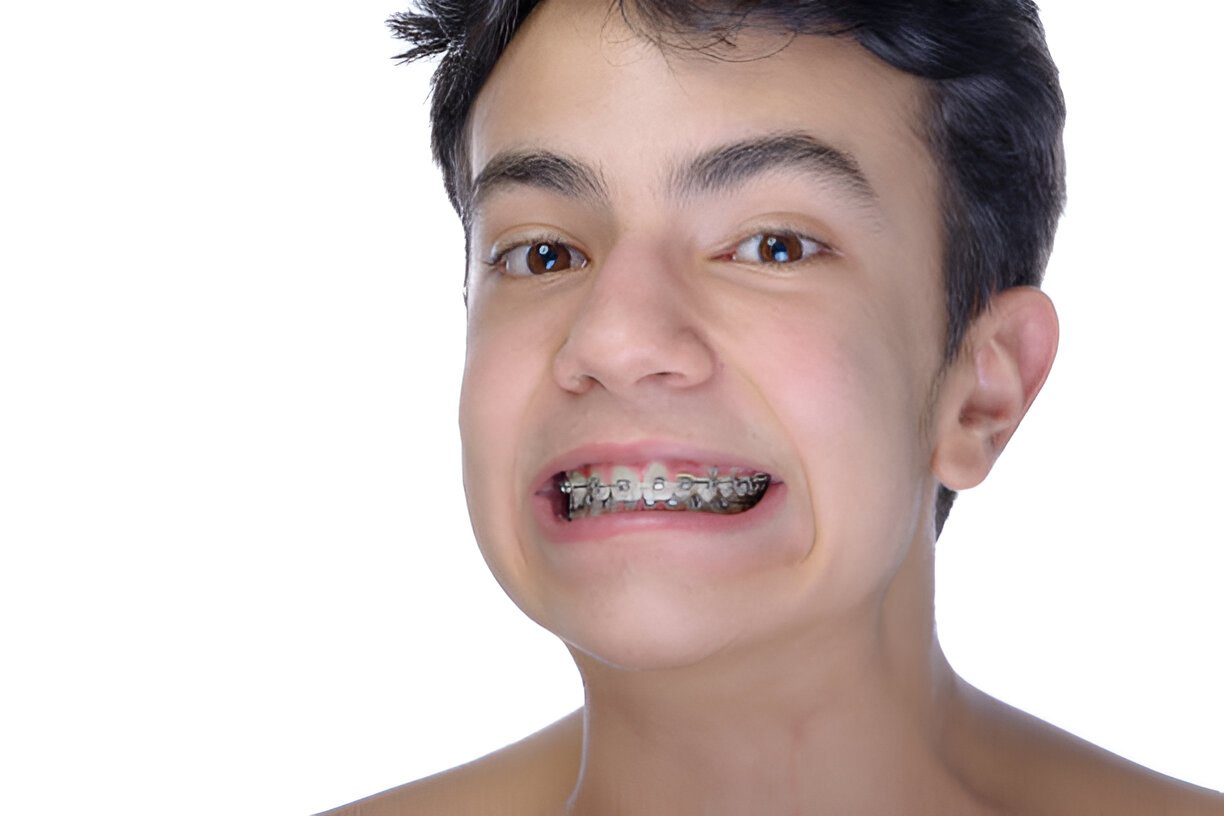Brushing your teeth is always important. But when you have braces, it becomes even more important. Braces have wires and brackets that can trap food. This makes it easier for plaque to build up. If not cleaned well, this plaque can turn into tartar. Tartar is hard and can cause tooth decay, stains, and gum problems.
Keeping your teeth clean with braces takes a bit more time and care. But with the right tools and routine, it becomes easy. Let’s go through the simple steps to help you brush with braces the right way.
What You’ll Need Before You Start
Before brushing, get all your tools ready. This saves time and helps you stay on track.
You will need:
- A soft toothbrush or electric toothbrush
- Fluoride toothpaste (non-abrasive)
- Floss with a floss threader or water flosser
- An interdental brush (also called a proxy brush)
- Antibacterial mouthwash
- A cup for rinsing
- A mirror to check your teeth
Having everything ready makes brushing easier and faster.
Do Braces Weaken Teeth?
Step 1: Rinse First
Start by rinsing your mouth with water. This helps to remove loose bits of food stuck in and around your braces. Swish the water around for a few seconds, then spit it out.
If you wear elastics or removable parts, take them out now. Keep them safe in a clean place.
Step 2: Brush at the Right Angles
Put a small amount of toothpaste on your brush. Begin brushing at a 45-degree angle to your gum line. Move the brush in small circles to clean around the gums. Then, brush the top of each bracket by angling your toothbrush downwards. After that, tilt the brush upwards to clean underneath the brackets and wires.
Make sure you clean each tooth, one by one. Don’t forget the chewing surfaces and the inside of your teeth too.
Step 3: Take Your Time
Brushing with braces takes longer than usual. Aim to brush for at least 2–3 minutes. It may take longer when you’re first learning, and that’s okay. Go slowly and carefully.
You can use a timer or listen to a short song to help you keep track. Brushing too quickly might leave behind plaque and food.
How Many Teeth Do You Need for Braces?
Step 4: Use an Interdental Brush
An interdental brush is small and thin. It helps clean between brackets and under wires. Use it gently to reach spots that your normal toothbrush can’t. This step is very helpful if you notice food getting stuck in tight spaces.
You don’t need to scrub hard. Just move the brush gently back and forth to clean the area.
Step 5: Floss Between Teeth
Flossing is still important, even with braces. It helps remove plaque from between your teeth. Use a floss threader to guide the floss under the wire. Gently move it up and down along each tooth.
If this feels too tricky, try a water flosser. It uses water to clean between teeth and around brackets. Either method works—just choose what’s easier for you.
Step 6: Rinse with Mouthwash
After brushing and flossing, rinse with an antibacterial mouthwash. It helps remove any leftover bacteria and keeps your breath fresh. Swish the mouthwash for about 30 seconds, then spit it out.
Do not eat or drink anything for 30 minutes after using mouthwash. This lets the mouthwash do its job.
Step 7: Check Your Work
Stand in front of a mirror and check your teeth. Look closely at your brackets and wires. If you see anything left behind, clean it again. Doing this helps you improve your brushing routine over time.
When you’re finished, put back any elastics or parts you removed.
What Foods to Eat and Avoid with Braces?
Tips for On-the-Go Brushing
Sometimes, brushing after every meal isn’t possible. If you’re at school or out, here are a few things you can do:
- Rinse your mouth with water to remove food
- Chew sugar-free gum to help clean your teeth
- Carry a travel kit with a toothbrush and floss
These steps don’t replace brushing, but they help until you can brush properly at home.
Mistakes to Avoid
Avoid brushing too hard, as it can damage your gums and enamel. Also, don’t skip flossing. Even if it takes time, it’s key to healthy gums.
Do not rush through brushing. It’s better to take a few more minutes than leave food behind. And always use a soft toothbrush to avoid harming your braces.
Stick to a Routine
Brush at least twice a day. If possible, brush after every meal. Floss once a day and use mouthwash regularly. Visit your dentist or orthodontist every few months for check-ups.
Brushing with braces may feel like a challenge at first. But with practice, it becomes easy. Clean teeth and healthy gums help your braces work better and make your final smile even brighter.
Are Braces Painful?
Frequently Asked Questions
How often should I brush my teeth with braces?
You should brush your teeth at least twice a day, and ideally after every meal. Braces trap food easily, so regular brushing helps prevent plaque, stains, and gum problems.
Can I use an electric toothbrush with braces?
Yes, electric toothbrushes are safe and can be more effective at cleaning around brackets and wires. Choose one with a soft head and gentle settings for best results.
What toothpaste is best for braces?
Use fluoride toothpaste that’s non-abrasive. Avoid whitening toothpaste as it can cause uneven colouring once your braces are removed. Gentle formulas protect enamel and gums.
How do I floss with braces on?
Use a floss threader or water flosser to clean between teeth and under wires. These tools help remove plaque in hard-to-reach areas without damaging your braces.
Do I still need to visit the dentist while wearing braces?
Yes, regular check-ups are essential. Your dentist checks for signs of decay, cleans around braces, and helps you maintain good oral health during treatment.
What if food gets stuck in my braces during the day?
Rinse your mouth with water, use an interdental brush if available, or chew sugar-free gum. Carrying a travel-sized kit helps with quick clean-ups on the go.
Do Braces Move Your Teeth Every Day?
Ready for a Straighter, Healthier Smile?
At Visage Orthodontics Aberdeen, we believe that caring for your braces should be simple, effective, and stress-free. As providers of top braces in Aberdeen, our team is here to guide you through every step of your orthodontic journey — including how to keep your smile clean and healthy. If you need personalised brushing advice or are ready to start your treatment, we’d love to hear from you.
Book your consultation with Visage Orthodontics Aberdeen today and take the next step towards a confident, well-cared-for smile.
